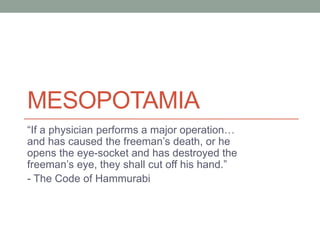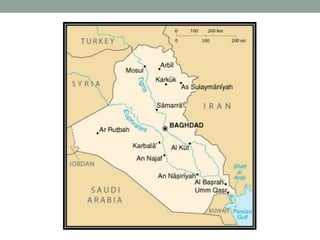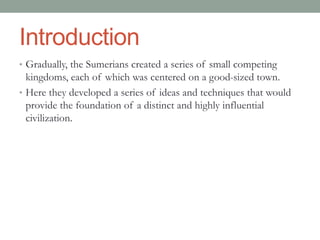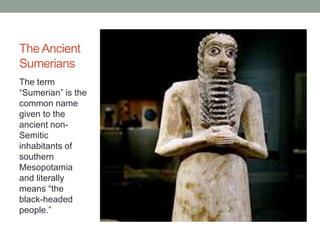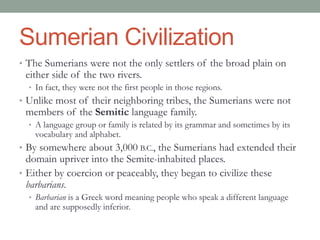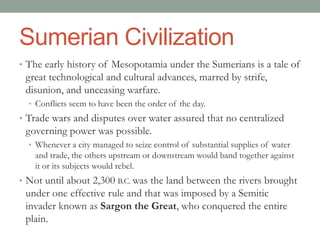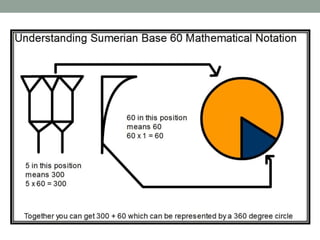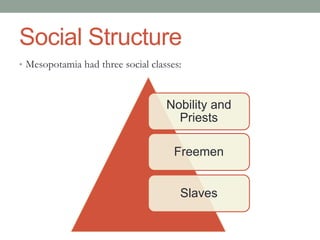The document provides an overview of the Sumerian civilization that originated in Mesopotamia between the Tigris and Euphrates Rivers in modern-day Iraq. The Sumerians developed the first extensive urban civilization, supported by irrigation farming. They created many cultural innovations, including the first system of writing, monumental architecture, irrigation systems, schools, use of bronze, and the wheel. Their achievements laid the foundations for later Mesopotamian empires like Akkad and Babylon. The document also discusses Sumerian religion, social structure, law, and their eventual decline after conquest by successive empires.
